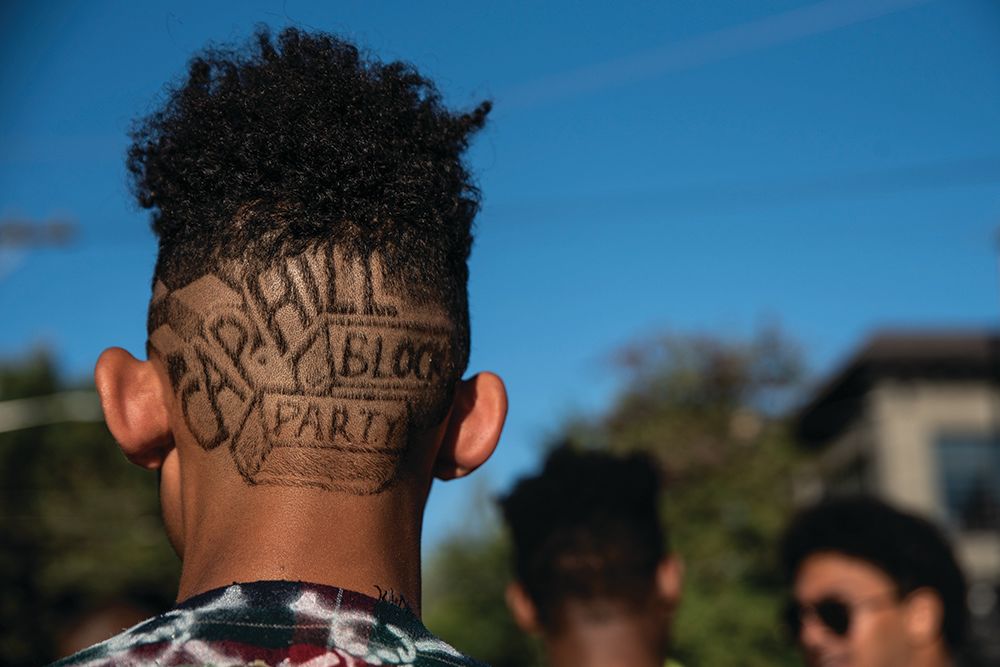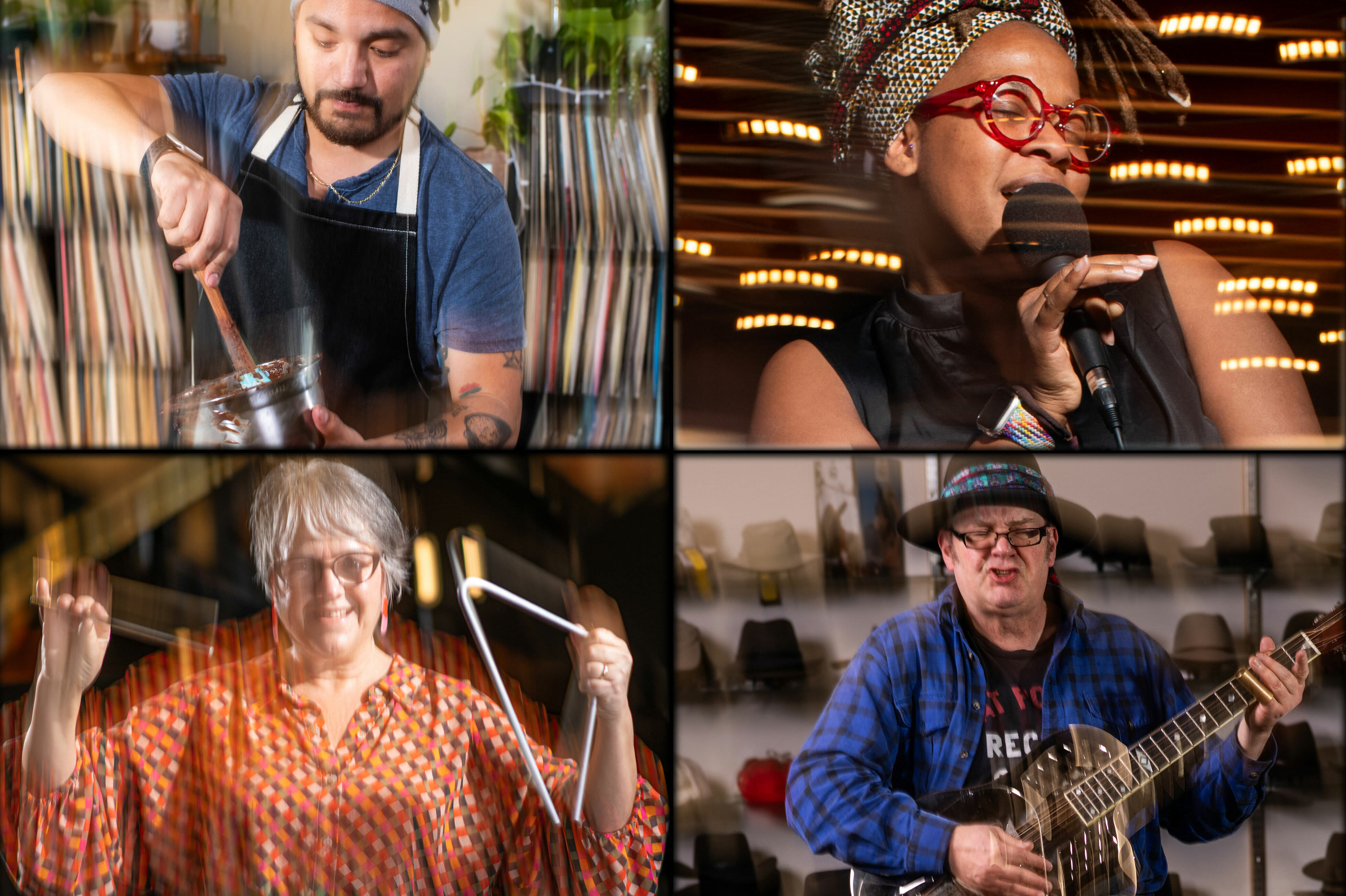How a Historic Anacortes Church Turned into a Destination Recording Studio

Ashley Eriksson and Eli Moore of Lake in the studio recording Eli's new solo album.
Image: Kyle Johnson
“I started off in bands affiliated with churches,” Nicholas Wilbur says with a laugh. “So I guess it’s come full circle. As kids, of course, all of us secretly wanted to be in non-church bands.”
Wilbur, a boyish 36, in sandals and shorts with auburn-brown hair and an easygoing manner, swivels in his command chair. He sits before an eight-foot-wide Quad Eight Pacifica Console in the choir loft—well, former choir loft—of St. Mary’s Catholic Church in Anacortes, Washington, which he converted to a mixing room in 2016.
Wilbur moved into the church in 2010 with local musician Phil Elverum (The Microphones, Mount Eerie). Together they christened the space “the Unknown,” and with the landlord’s blessing set about the most ambitious overhaul the sanctuary had ever seen, revamping the space as a recording studio that would lure musical talent like Sumac, Fleet Foxes, and Angel Olsen to languid Padilla Bay.

Image: Kyle Johnson
These are big, important musical acts for a place the size of Anacortes. The town was something of a West Coast touring hub in the aughts thanks to the Department of Safety—a multiuse artists’ space in an old police and fire station—but when it shut its doors in 2010 the city nearly lost its musical relevance. It held on thanks to Elverum and Wilbur, who made a bid to rent the church that same year.
“When I heard it might be available,” Wilbur says of the space, “I remember coming around trying to peek in the windows, like, is the floor slanted or flat? Will it work?”
In a word, yes. It worked. And based on Wilbur’s calendar, booked out months in advance, it’s working better than ever.
“The Unknown is an adventure, a playground,” says pianist Noah Goldberg, fresh off some studio time with Seattle soul-funk group Breaks and Swells. “You walk in and feel the gospel power of a secular cathedral. Open and airy, every instrument laid out, inviting you to play them right where they sit. I loved it.”

The church's steeple blew off during a 1962 windstorm.
Image: Kyle Johnson
The church, with a handsome eggshell-white exterior, and an interior defined by rich wooden details and warm yellow light, dates to 1929. Its former iteration, erected in 1904 on the same lot, was destroyed by arson (possibly by the anti-Catholic KKK) in 1924. Like Anacortes around it, the “new” century-old building has undergone immense change since the cannery-fueled fishing days of its conception. The steeple blew off during a vicious windstorm in springtime, 1962, crashing onto the rectory next door, and the diocese sold the building in 1978 to the nonprofit American Croatian Club, moving St. Mary’s operations to a sprawling hilltop compound near the cemetery.
With the congregation gone and the Croatian Club settled in the basement, the sanctuary commenced a nondenominational life cycle. First came a dance company in the ’80s, then a succession of sailmakers. But the aughts ushered in its most startling transformation yet, one that hinged on Elverum and Wilbur, the latter a product of Arkansas who arrived in Anacortes on a lark.
“I wanted to get out of the Ozarks,” says Wilbur matter-of-factly. “I wanted to go west. I was doing house shows, and a guy mentioned Anacortes. He said I should check out this thing there called the Department of Safety.”

Image: Kyle Johnson
So Wilbur did, pulling onto Commercial Avenue in 2008 after a harrowing journey that involved selling his clunker in Eastern Oregon, buying a $500 Suburban, and parting with that as well when its transmission kicked the can. In Anacortes, 20 years old and stone broke, he began hanging around the DoS. That’s where he met Elverum, who recruited him to one of his bands and asked for help building a studio. Wilbur landed a janitorial job down the street in a hotel turned office building, where the two of them set up recording gear in the ballroom every night and tore it down before working hours.
“It wasn’t ideal,” says Wilbur. “There was some talk about the church, but it always seemed too good to be true.”
In a typical year, it would’ve been. But the Great Recession hit the sailmakers hard, and the Croatian Club’s board included musician/historian Bret Lunsford (Beat Happening, D+), who knew Elverum from the local scene. When the sailmakers could no longer afford to stay, Lunsford encouraged Wilbur and Elverum to make an offer to the Croatian Club on the space.
“So we made an offer,” says Wilbur. “I took everything from the hotel, moved it here, and recorded a band two weeks after.”

Jazz drummer Evan Woodle.
Image: Kyle Johnson
Wilbur and Elverum began the physical process of transforming the sanctuary into a recording studio. The apse became a drum soundstage after Wilbur ripped out its altar. The bottom of the bell tower became a prototype mixing room. A crimson damask rug was placed at the head of the faintly custard-lit nave, around which instruments accrued with astonishing speed. Xylophones, organs, amplifiers, synthesizers. Even gongs. One set of confessionals turned to a bathroom. The other could be used as a sound booth.
The most arduous part of the overhaul was revamping the open-faced choir loft as a soundproofed control room in 2016, then closing it off with drywall. “This whole thing was not here,” Wilbur says, gesturing widely.
The sanctuary is a unique acoustical beast. Wilbur says that when he and Elverum first moved into the empty room, “it was insane,” the sound undulating too dynamically for capture. Even with its ample engineering, one feels the space’s natural amplification before speaking a word. The creak and clap of the front door ricochets off the back wall as you enter, expanding in all directions like a broken cymbal.

Image: Kyle Johnson
Wilbur occasionally uses assistants—“it’s a lot of cleanup and teardown by yourself”—but these days he tends to operate as a one-man show: pulling morning espresso at his Rocket R Cinquantotto, digging through shelves for choice microphones, laying instrument cables through his carefully constructed isolation booths, and of course indulging his affectionate Weimaraner, Cathy, a frequent studio guest who knows not to bark.
Many of Wilbur’s artists are repeat clients. Musicians return to the Unknown not just for its sterling sonic quality but because it’s a comfortable, stimulating place to work. If beauty begets creativity, this place is absolutely a muse.
Take a lunchtime stroll around the old St. Mary’s church and you’ll see those tattooed masses at work. Grindcore shredders limbering up their fingers, pianists humming harmonies, crooners warming up their lungs. Wilbur lies at the heart of it all, an out-of-towner turned pivotal cog in Anacortes’s storied scene. The operation’s low profile persists for the moment, but that hasn’t stopped some of the bigger names in indie rock from knocking at Wilbur’s door.
“Those Anacortes recordings,” wrote Rolling Stone of Angel Olsen’s Whole New Mess, are “so stark they sound like X-rays of her soul.”




